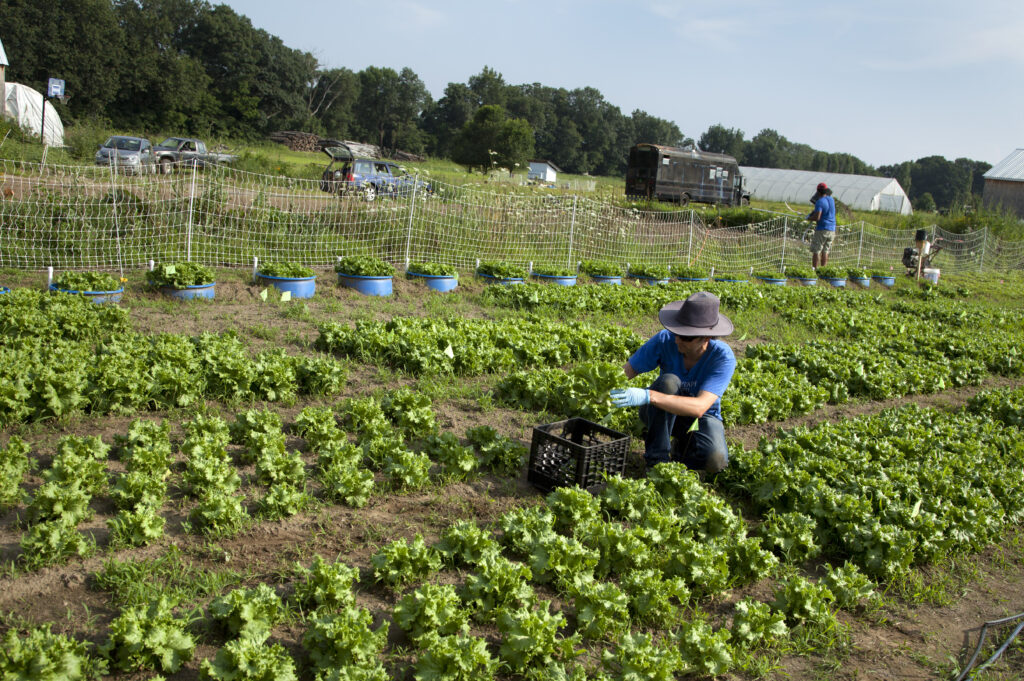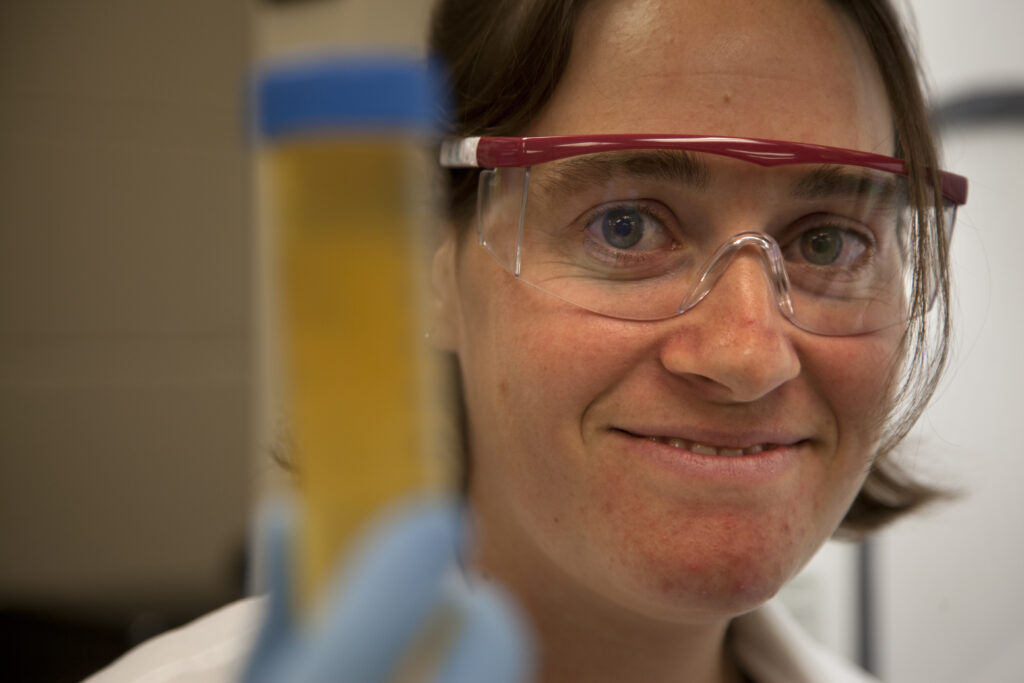
Peecycling
Progress continues for upcycling urine as a safe agricultural fertilizer.

Progress continues for upcycling urine as a safe agricultural fertilizer.
Peecycling is part of the Look back feature from the Spring 2023 issue of Michigan Engineer magazine.
Written By Nicole Casal Moore
Longtime readers know that the “Pee for the Peonies” photo in our fall 2022 issue wasn’t the first time we’ve covered the effort to develop safe, socially acceptable fertilizer out of human urine.
That was in spring 2015, and the plants being fed were lettuce and carrots. “Peecycling: Beyond flush and forget” took an in-depth look at the nation’s first large-scale pilot studying the safety and effectiveness of urine-derived fertilizers for food crops. It grew into the largest U.S. program exploring the related technology, systems requirements and social attitudes, and brought together U-M, the University at Buffalo and the Rich Earth Institute, a Vermont nonprofit.

Over the past eight years, the team’s work has laid important groundwork for wastewater and agriculture systems that take a more circular approach. Urine is full of nitrogen and phosphorus, key nutrients plants need to thrive. Upcycling it into fertilizer could save energy, water and money.
“We’re making progress!” said project leader Nancy Love, the Borchardt and Glysson Collegiate Professor and JoAnn Silverstein Distinguished University Professor of Environmental Engineering and professor of civil and environmental engineering
Propelled by the team’s findings, the Rich Earth Institute launched the company BrightWater Tools to commercialize solutions for collecting, storing and treating urine so it can be safely and efficiently converted to fertilizer. The company offers a low-power pasteurizer that sanitizes urine to EPA agricultural standards, a concentrator that reduces the volume of the urine, and a building-scale system. The concentrator was tested at Michigan Engineering, where it was connected to a waterless urinal and a split-bowl toilet as part of the nation’s first end-to-end system. This summer, BrightWater will install a second-generation concentrator on campus, one of the company’s first pasteurizers sold.

In addition to advancing the technology, the team has deepened its understanding of social attitudes. While they expected to find a significant “ick factor” in people they surveyed, they discovered it wasn’t an insurmountable hurdle. “It turns out people adapt to the idea once they learn a little, both positive and negative, about various fertilizer options,” Love said. Researchers compared attitudes about organic fertilizers, conventional synthetic fertilizers, and biosolids (treated sewage from wastewater facilities). Respondents preferred organic fertilizers overall. Urine-derived fertilizers were perceived similarly to biosolids, and both of those were preferred well ahead of the synthetic options that currently fertilize the vast majority of our food.
They also validated the safety of using urine in this way. The biggest safety question the team set out to answer was whether pharmaceuticals from urine could show up in the tissue of plants fertilized with it. They tested more than 20 medications. While trace amounts of a subset of the medications did persist in the crops, the levels were in line with those found in plants fertilized with animal manure or irrigated with treated wastewater—both of which occur on organic farms as well as conventional ones.
“The paradigm shift is well underway,” said Kim Nace, co-founder of the Rich Earth Institute and CEO of BrightWater Tools. “In Paris, researchers, politicians, civil engineers and city planners are moving ahead together, creating circularity in water resource management systems. A urine nutrient recovery system that collects from 1,200 people in about 600 apartment units will be fully operational by 2026.”
Today the U-M team aims to advance the revolution on this side of the pond as well. It is working with scientists who specialize in sustainable food systems to engage with farmers and navigate U.S. regulatory systems.
While flood-resiliency efforts continue, Indonesia plans to abandon Jakarta as its capital.
While hunger for an artificial intelligence that can think like a human remains unsated, AI continues to appear in our lives in smaller ways.
Not only can research participants control a prosthetic hand with their minds—now they can begin to “feel” it, too.
Askanya Chocolates continues to churn out opportunity in an increasingly troubled Haiti.
Photos by Marcin Szczepanski